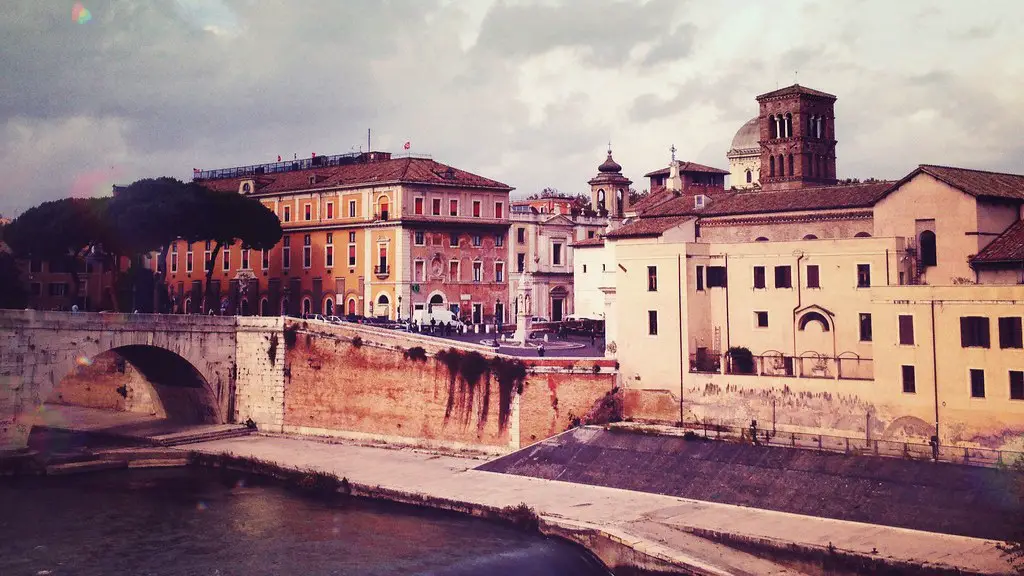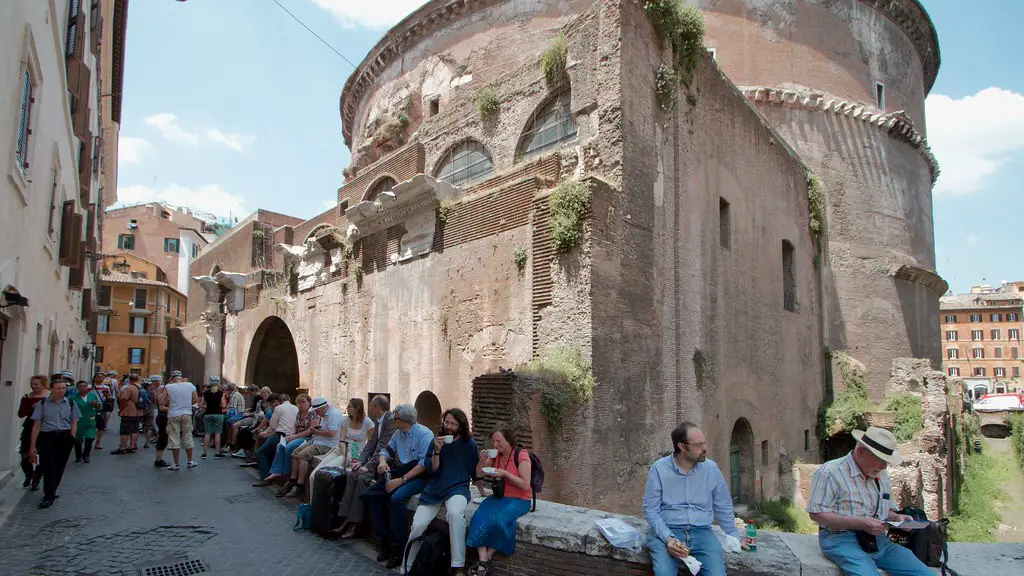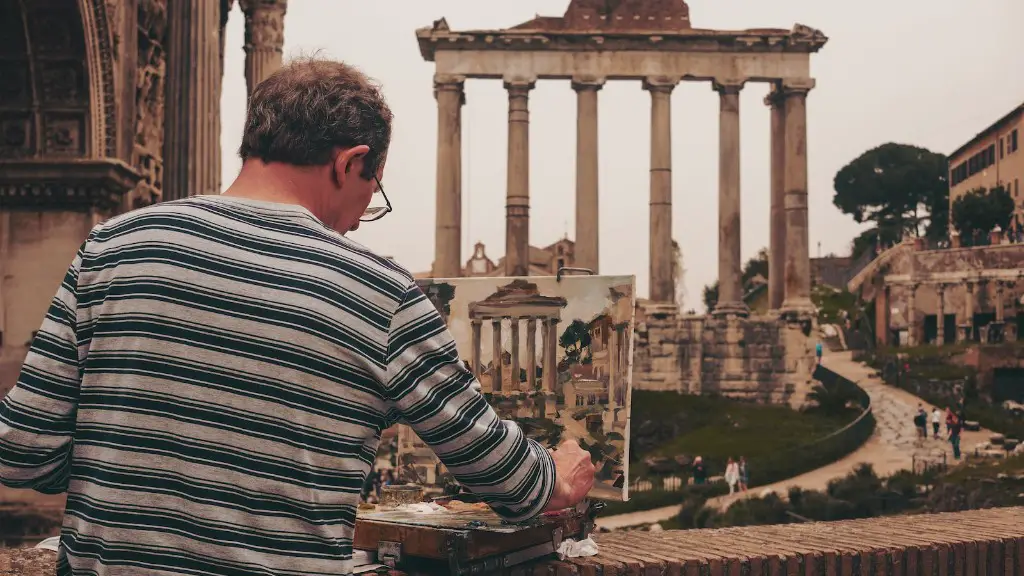The ancient Roman civilization has had a profound and lasting influence on modern society. Many of the fundamental institutions and values of Western civilization have their origins in ancient Rome. Roman law, government, and architectural design have all shaped the modern world. The Roman Catholic Church, the largest Christian denomination in the world, is also a direct legacy of Rome. In short, the influence of ancient Rome on modern society is both significant and far-reaching.
Ancient Rome has had a profound and lasting influence on modern society. Many aspects of modern life are a direct result of Roman innovation and civilization. For example, the modern calendar is based on the one originally designed by the Romans. Roman law and government have also had a significant impact on modern society. The concepts of democracy, equality before the law, and free speech can all be traced back to Ancient Rome.
How is modern society influenced by Rome?
As one of the most powerful empires of its time, the Roman Empire left a lasting mark on the world. From its art and architecture to its technology and literature, the influence of the Roman Empire can still be seen today. Even its language and law have had a lasting impact on the world. The Roman Empire was a truly remarkable civilization that has left a lasting legacy on the world.
The Roman Empire was one of the most influential empires of its time. Not only did they leave a lasting mark on the world, but they also introduced many things that we take for granted today. Here are 13 things the Romans did for us:
1. Fast food – It might seem a modern marvel, but the Romans were the first to introduce street stalls and ‘food on the move’ as we might think of it today.
2. Advertising and trademarks – The Romans were the first to use advertising and trademarks to promote their businesses.
3. Plumbing and sanitation – The Romans were the first to develop plumbing and sanitation systems that are still in use today.
4. Towns – The Romans were the first to develop towns and cities as we know them.
5. Architecture – The Romans were responsible for some of the most iconic architecture in the world, from the Colosseum to the Pantheon.
6. Roads – The Romans built an extensive network of roads that spanned the entire empire, making trade and travel easier than ever before.
7. Our calendar – The Roman calendar was the basis for the modern calendar that we use today.
8. Law and order – The Romans introduced
How did Rome influence the modern United States
The Roman Republic was a model for many of the founding fathers when they were creating the United States Constitution. The Roman Republic had a system of checks and balances, a two-house legislature, term limits, and age requirements for office holders that were all incorporated into the US Constitution. In some cases, the Founders even borrowed terminology from the Roman constitution, using words like senate, capitol, and committee.
After the fall of the Roman empire, many of the world’s legal systems were based on Roman law. Roman law remains hugely influential and is still reflected in the civil laws of several European nations as well as the US state of Louisiana.
What are 5 contributions of Ancient Rome?
Cement, the Aqueduct, sanitation, roads, social care, and welfare are all examples of things that were developed by the ancient Romans that still have an impact on our lives today. The Julian calendar, elements of surgery, and the modern legal system are all based on Roman innovations. Even though the Roman Empire is long gone, their legacy continues to shape our world in many ways.
The ancient Romans were known for their military, political, and social institutions. They conquered vast amounts of land in Europe and northern Africa, built roads and aqueducts, and spread Latin, their language, far and wide.
What did ancient Rome invent that we still use today?
The ancient Romans were famous for their engineering and construction skills, and many of their iconic buildings and structures are still standing today. This was made possible by their invention of hydraulic cement-based concrete, which is a type of concrete that is still used today.
Bridges, aqueducts, amphitheatres, and sewers all heavily utilise arches. Arches are very strong and can support a lot of weight. Roman numerals are used centuries after the fall of the Roman Empire because they are a very concise way of writing numbers.
What 3 ideas did America get from Rome
The executive branch of ancient Rome was responsible for carrying out the laws and for maintaining peace within the empire. The two consuls, elected by Roman landowners, served one-year terms and were responsible for the day-to-day operations of the government. The judicial branch was responsible for interpreting the laws and for administering justice. The legislative branch was responsible for creating the laws.
The Romans were very innovative in their use of materials to build their empire. Cement was a strong material that allowed them to build huge arches and domes. They also had a vast network of roads that allowed for easy transportation and communication. The aqueducts were a great way to bring water from the countryside to the cities.
How did Ancient Rome affect the US?
However, the most far-reaching debt that the United States owes to Rome is in the realm of law. The very basis of the American legal system—trial by jury, precedence, and equality before the law—are all Roman innovations. Moreover, many of the most fundamental concepts in American law, such as property rights and contracts, have their origins in Roman law. In short, without the legacy of Rome, the United States would be a very different place.
Roman civilization had a lasting and significant impact on the world we live in today. Many of the things we take for granted, such as our buildings and how they are heated, the way we get rid of our sewage, the roads we use, some of our wild animals, religion, the words and language we speak, how we calculate distances, numbers and why we use money to pay for goods were all introduced by the Romans.
Without the Romans, our world would be a very different place. We owe them a great debt of gratitude for the many things they have given us.
What major contributions legacy did Rome give to the world
The ancient Romans were a people who left a lasting impression on the world. Even though they were around over two thousand years ago, their legacy is still felt today in western culture. Governments, law, language, architecture, engineering, and religion have all been influenced by the Romans. Many modern-day governments are modeled after the Roman Republic, which was a model of democracy and governance. The Roman Catholic Church is one of the largest and most influential religious institutions in the world, and it traces its origins back to the Roman Empire. The architecture of the Roman Empire is some of the most iconic and recognizable in the world. The Colosseum, the Pantheon, and the aqueducts are just a few examples of Roman engineering and architecture that are still admired today. The legacy of the Roman Empire is still very strong and evident in the western world.
The Roman Empire was one of the most powerful empires in the world for centuries. It was a major cultural force in the Western world, influencing state institutions, law, cultural values, religious beliefs, technological advances, engineering and language. Even today, the legacy of the Roman Empire can be seen in many aspects of our lives.
How does life in ancient Rome compared to ours today?
Despite living roughly 2,000 years ago, daily life in ancient Rome was actually not that much different to our own in many respects. The vast majority of the population had to go to work to earn enough money to live on. They spent time with family and looked after the administration of the household. In many ways, it seems that the ancient Romans were just like us!
Urban areas in the Roman Empire were able to have access to fresh water because of aqueducts. Aqueducts are pipelines that bring water from the mountains to areas without water. Some aqueducts were even able to bring water to urban areas that were located miles away from the water source. This was a significant invention because it allowed for people to live in areas that were not near a water source.
Another example of a Roman invention is roads. The Roman road system was one of the most extensive and advanced transportation systems of its time. The roads were built for efficient transportation and were used for military, trade, and transportation. The roads were also used to connect cities and towns that were located far apart. This allowed for people to travel long distances without having to take a long and dangerous journey through the wilderness.
Concrete buildings were another invention of the Romans. The Roman empire was the first to use concrete extensively in their buildings. This made their buildings stronger and more durable than buildings made of other materials. The use of concrete also allowed the Romans to build very tall and big buildings.
Medical tools for the battlefield were also invented by the Romans. The Roman army was able to treat their wounded soldiers on the battlefield with the
Final Words
The ancient Roman civilization has had a profound and lasting influence on modern Western civilization. Many aspects of Roman culture and civilization have been adopted by modern societies, including the English language, government, law, and architecture. Other areas of influence include education, religion, and the arts.
The influence of ancient Rome on modern society is undeniable. From our government and laws, to our language and architecture, many aspects of our daily lives are a direct result of the Roman Empire. Even though Rome fell over 1,500 years ago, its impact on the world today is still very evident.





